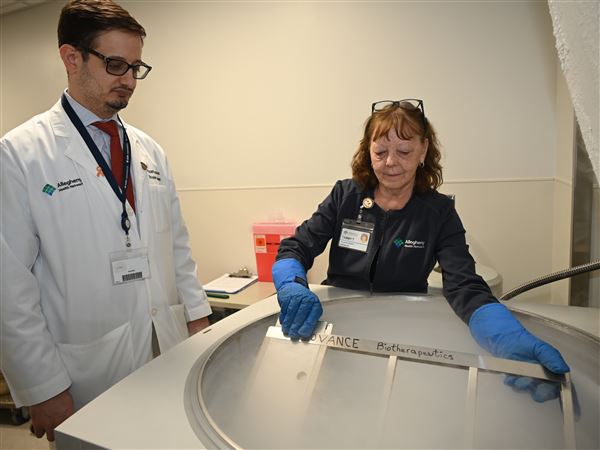Road to game-changing cancer treatment – Harvard Gazette

Report on Cancer Immunotherapy Advancements and Contribution to Sustainable Development Goals
Executive Summary: Impact on Global Health and Innovation
Recent breakthroughs in cancer immunotherapy, particularly the development of immune checkpoint inhibitors, represent a significant stride in medical science. These advancements have drastically improved patient outcomes for numerous cancers and align directly with several United Nations Sustainable Development Goals (SDGs). This report details the impact of these therapies on public health, the innovative processes behind their development, and the collaborative partnerships that made them possible, framing these achievements within the context of SDG 3 (Good Health and Well-being), SDG 9 (Industry, Innovation, and Infrastructure), and SDG 17 (Partnerships for the Goals).
SDG 3: Promoting Good Health and Well-being
The primary contribution of cancer immunotherapy is its direct impact on ensuring healthy lives and promoting well-being, a core target of SDG 3. The success of these treatments has transformed the prognosis for patients with advanced cancers.
- Expanded Treatment Options: Immune checkpoint inhibitors are now approved for the treatment of more than 25 different types of cancer.
- Revolutionized Melanoma Outcomes: The 10-year survival rate for advanced melanoma patients treated with combination immunotherapies has reached 50 percent or higher.
- Historical Comparison: This marks a monumental improvement from just 15 years ago, when the five-year survival rate for metastatic skin cancer was only 5 percent (1 in 20 patients).
SDG 9: Fostering Industry, Innovation, and Infrastructure
The development of effective immunotherapies is a testament to the power of sustained investment in scientific research and innovation, a key component of SDG 9. This success was not an overnight discovery but the result of a long-term, cumulative process built upon a robust research infrastructure.
- Pioneering Research: The conceptual foundation was laid as early as 1891 by surgeon William B. Coley, who is now recognized as the “father of cancer immunotherapy” for his early experiments injecting bacteria into tumors.
- Crucial Investment in Basic Science: Coley’s work required further scientific understanding. Major federal investments in U.S. biomedical research following World War II provided the necessary funding and infrastructure for scientists to realize the promise of using the immune system to fight cancer.
- A Building-Block Process: Decades of foundational research across multiple institutions were required to understand the mechanisms of action, leading to the eventual breakthrough therapies available today.
- Ongoing Innovation: Current research continues to build on this foundation, focusing on refining therapies by targeting unique tumor features and engineering smarter, more persistent immune cells.
SDG 17: Strengthening Partnerships for the Goals
The journey from early concept to life-saving treatment exemplifies the importance of partnerships, as outlined in SDG 17. The success of immunotherapy was not achieved in isolation but through the concerted efforts of various stakeholders.
- Inter-Institutional Collaboration: The research and development process involved extensive work “across multiple institutions.”
- Public-Private Synergy: The “influx of funding for basic science” from federal sources highlights a critical partnership between government bodies and the research community, enabling the long-term, high-risk projects that are essential for transformative breakthroughs.
Analysis of Sustainable Development Goals in the Article
1. Which SDGs are addressed or connected to the issues highlighted in the article?
The article primarily addresses two Sustainable Development Goals (SDGs):
- SDG 3: Good Health and Well-being: This is the most prominent SDG in the article. The entire text focuses on advancements in cancer treatment (immunotherapy), which directly contributes to improving health outcomes and increasing survival rates for patients with non-communicable diseases like cancer. The article explicitly mentions the “astounding” outcomes for advanced melanoma, showcasing a direct impact on public health.
- SDG 9: Industry, Innovation, and Infrastructure: The article strongly connects the medical breakthroughs to underlying scientific innovation and research infrastructure. It highlights that these advances “build on decades of research across multiple institutions” and were made possible by “major federal investments in U.S. biomedical research” and an “influx of funding for basic science.” This emphasizes the role of sustained investment in scientific research and innovation as a foundation for progress.
2. What specific targets under those SDGs can be identified based on the article’s content?
Based on the article’s content, the following specific targets can be identified:
-
Target 3.4: “By 2030, reduce by one-third premature mortality from non-communicable diseases through prevention and treatment and promote mental health and well-being.”
- Explanation: The article directly addresses this target by describing a revolutionary treatment for cancer, a primary non-communicable disease. The development of immune checkpoint inhibitors has led to a dramatic reduction in mortality for advanced melanoma, as stated in the article: “Today, advanced melanoma patients treated with a combination of immunotherapies have a 10-year survival rate of 50 percent or higher,” a significant improvement from the past.
-
Target 9.5: “Enhance scientific research, upgrade the technological capabilities of industrial sectors in all countries… including… encouraging innovation and substantially increasing… public and private research and development spending.”
- Explanation: The article attributes the success of modern cancer immunotherapy directly to sustained scientific research and funding. It states that the promise of immunotherapy was realized due to an “influx of funding for basic science in the latter half of the 20th century” and “major federal investments in U.S. biomedical research.” This directly supports the goal of enhancing scientific research through increased public spending.
3. Are there any indicators mentioned or implied in the article that can be used to measure progress towards the identified targets?
Yes, the article mentions and implies specific indicators for measuring progress:
-
Indicator for Target 3.4 (Implied: Indicator 3.4.1 – Mortality rate attributed to… cancer):
- Explanation: The article provides specific data that serves as a direct measure for this indicator. It contrasts the historical five-year survival rate for metastatic skin cancer (“only 1 in 20 patients,” or 5%) with the current 10-year survival rate for patients treated with immunotherapies (“50 percent or higher”). This dramatic increase in survival rate is a direct measure of reduced mortality from cancer, aligning perfectly with the indicator.
-
Indicator for Target 9.5 (Implied: Indicator 9.5.1 – Research and development expenditure as a proportion of GDP):
- Explanation: While the article does not provide a specific percentage or monetary value, it strongly implies the importance and impact of this indicator. The text explicitly credits “major federal investments” and an “influx of funding for basic science” as the catalysts for the described medical breakthroughs. This qualitative evidence underscores the direct relationship between R&D expenditure and the achievement of innovative outcomes, serving as a proxy for the indicator’s relevance.
4. Table of SDGs, Targets, and Indicators
| SDGs | Targets | Indicators Identified in the Article |
|---|---|---|
| SDG 3: Good Health and Well-being | Target 3.4: Reduce by one-third premature mortality from non-communicable diseases through prevention and treatment. | Indicator (related to 3.4.1): The 10-year survival rate for advanced melanoma patients increased from 5% to 50% or higher due to new immunotherapy treatments. |
| SDG 9: Industry, Innovation, and Infrastructure | Target 9.5: Enhance scientific research… and substantially increase… public and private research and development spending. | Indicator (related to 9.5.1): The article credits “major federal investments in U.S. biomedical research” and an “influx of funding for basic science” as essential for the development of cancer immunotherapy. |
Source: news.harvard.edu

What is Your Reaction?
 Like
0
Like
0
 Dislike
0
Dislike
0
 Love
0
Love
0
 Funny
0
Funny
0
 Angry
0
Angry
0
 Sad
0
Sad
0
 Wow
0
Wow
0












































































